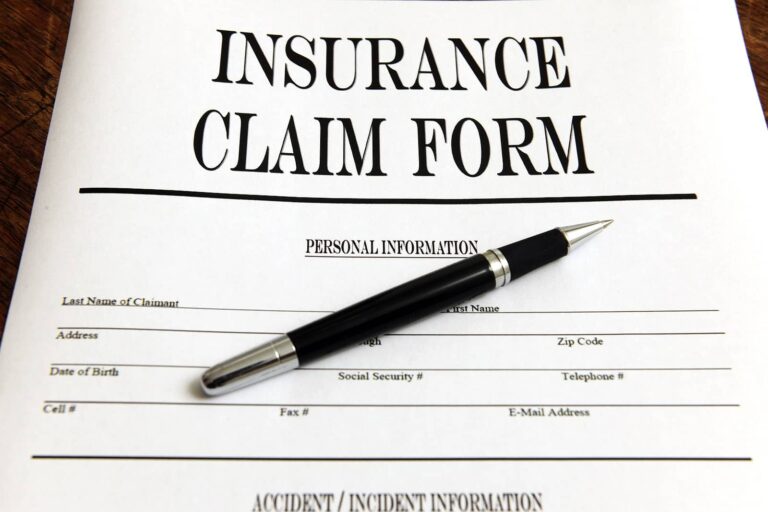In the dynamic world of real estate investment, where opportunities and risks walk hand in hand, understanding the nuances of landlord liability insurance becomes not just beneficial but essential.
As a current or aspiring real estate investor, you’re likely familiar with the thrill of acquiring a new property and the anticipation of turning it into a profitable venture. However, amidst these exciting prospects, there lies a less talked about, yet critical aspect of property investment: risk management. This is where liability to landlord insurance steps in as a pivotal tool.
This comprehensive guide is designed to demystify landlord liability insurance for real estate investors like you. Whether you’re just starting your journey in the real estate market or are a seasoned investor expanding your portfolio, understanding the intricacies of this insurance is crucial. Landlord liability insurance goes beyond the realm of a mere contractual obligation; it serves as a shield, protecting your investment, your financial wellbeing, and your peace of mind in a landscape riddled with unpredictability.
In the following sections, we will delve into what landlord liability insurance is, why it is indispensable in your investment toolkit, and how it can safeguard your assets against a plethora of risks. From dealing with tenant injuries to navigating legal complexities, this insurance is more than a safety net – it’s a strategic asset in your real estate investing endeavors. So, let’s embark on this informative journey to ensure that your investments are not just profitable but also prudently protected.
What Is Landlord Liability Insurance?
At its core, landlord liability insurance is a type of insurance policy specifically designed to protect real estate investors from the financial risks associated with renting out their properties. This form of real estate investor insurance is a critical component in the arsenal of any property owner who leases their real estate as it provides a safety net against a range of potential liabilities.
Understanding the Coverage: Landlord general liability insurance primarily covers legal and medical costs that may arise if a tenant or a visitor suffers an injury on the property due to a maintenance issue or negligence on the part of the landlord. This can include anything from slips and falls to more serious accidents. If the injured party decides to sue for damages, the insurance can cover legal fees, court costs, and any awarded damages, up to the policy’s limit.
Beyond Physical Injuries: The scope of landlord liability insurance extends beyond physical injuries. It can also offer protection in situations involving property damage, such as fire or structural damage caused by tenant negligence. Additionally, it may cover legal fees and losses in cases of wrongful eviction or invasion of privacy claims brought by tenants.
A Shield Against Financial Ruin: For real estate investors, this insurance is not just about compliance with legal requirements; it’s a strategic tool for financial protection. Without it, landlords could be personally liable for costly legal battles and potential settlements, which can be financially devastating. This risk is particularly acute for smaller investors, where such costs can significantly impact their financial stability.
Tailored to Investment Needs: Importantly, landlord liability insurance policies can be tailored to the specific needs of the property and the level of risk involved. Factors like the property’s location, type of tenants (for example Airbnb insurance is different from long term rental property insurance), and the age and condition of the building can influence the coverage requirements. This customization ensures that investors are not overpaying for unnecessary coverage, yet are adequately protected against relevant risks.
A Foundation for Secure Investing: In essence, landlord liability insurance acts as a foundation for secure real estate investing. It allows investors to focus on maximizing their property’s potential while mitigating the risks that come with becoming a landlord. In a business where unforeseen incidents can occur, having this insurance is a testament to prudent, forward-thinking investment strategies.
To sum up, landlord liability insurance is an indispensable tool for real estate investors, providing a critical layer of financial and legal protection for landlords against a variety of risks associated with property rental. By understanding and investing in the right coverage, landlords can safeguard their assets, ensure compliance with legal obligations, and enjoy peace of mind as they navigate the rewarding, yet often unpredictable, terrain of real estate investment.
Why Is Landlord Liability Insurance Crucial for Your Investment?

The importance of landlord liability insurance
Navigating the world of real estate investment involves not only identifying lucrative opportunities but also understanding and managing the risks associated with rental properties. Landlord liability insurance is not just a safety measure; it’s a crucial element that safeguards your investment and financial security, making it a major part of risk management in real estate investment.
Let’s explore some real-life scenarios where this insurance proves indispensable.
Tenant Injuries and Legal Implications
One of the most common risks landlords face is the possibility of a tenant or a visitor getting injured on the property. Consider scenarios such as a tenant slipping on an icy walkway, a child getting hurt due to a broken railing, or a visitor tripping over an uneven floorboard. In each of these cases, the landlord could be held legally responsible for the injuries sustained.
Without landlord liability insurance, the financial implications of such incidents can be staggering. Legal fees, court costs, and potential settlements or judgments can quickly escalate, especially in cases of serious injuries. With adequate rental property liability coverage, however, these costs are typically covered by the insurance policy, protecting the landlord’s assets and ensuring that a single incident doesn’t lead to financial ruin, turning a positive cash flow investment property into a negative one.
Property Damage and Liability Coverage
Another critical aspect of landlord liability insurance is its role in protecting against claims of property damage. This can range from accidental fires caused by tenants to structural damages resulting from negligence. For instance, if a tenant’s faulty appliance leads to a fire that damages not only the rented unit but also neighboring properties, the landlord could be held liable for the damages.
Landlord liability insurance can cover the costs of repairing the damage to the property and any legal fees associated with liability claims in rental properties made by affected parties. This landlord insurance coverage is vital in ensuring that the landlord’s investment is not depleted by unforeseen damages and that their financial stability is maintained.
In both scenarios – tenant injury liability and property damage – landlord liability insurance acts as a buffer against the unpredictable elements of property management. It provides a layer of financial security that allows real estate investors to operate with confidence, knowing that they are protected against some of the most common risks in the rental market. This insurance is not just about mitigating risks; it’s an essential component of a sustainable and successful real estate investing strategy.
Understanding Your Coverage: What Does Landlord Liability Insurance Include?
Navigating the intricacies of landlord liability insurance can be daunting, yet it’s crucial for real estate investors to understand exactly what their policy covers. A typical landlord liability insurance policy encompasses several key elements designed to protect against various risks associated with renting out property.
Let’s break down these elements to give you a clearer picture of what to expect from your coverage.
Legal Expense Coverage
One of the primary components of landlord liability insurance is coverage for legal expenses. This aspect is particularly important given that legal disputes, whether with tenants or third parties, can arise unexpectedly and can be financially draining. Legal expense coverage typically includes the cost of legal representation, court fees, and any settlements or judgments that may be awarded in a lawsuit. This coverage is invaluable in scenarios ranging from tenant disputes over security deposits to lawsuits for injuries sustained on the property.
Medical Payments Coverage
Another critical aspect of landlord liability insurance is medical payments coverage. This part of the policy is designed to cover medical expenses resulting from injuries that occur on your property, regardless of who is at fault. For instance, if a tenant or a visitor slips and falls on the property, requiring medical attention, this coverage can help pay for their medical expenses. It’s an essential safeguard that helps mitigate the financial impact of accidents on your property.
Choosing the Right Landlord Liability Insurance Policy
Selecting the best landlord liability insurance policy for your real estate investment requires careful consideration. It’s important to ensure that the policy matches the specific needs of your property and investment strategy. Consider factors such as the property’s location, the type of tenants you have, and the range of potential risks. It’s also wise to look for policies that offer flexibility in coverage limits and deductibles, allowing you to tailor the policy to your specific situation.
Assessing Your Risk Profile
Each real estate investment carries its unique set of risks, influenced by factors like property type (condo insurance is different from single family or multifamily insurance), location, and tenant demographics. Urban properties might face different challenges than rural ones, and residential rentals have different considerations compared to commercial properties. Assessing your risk profile involves evaluating these factors to determine the level and type of coverage that best aligns with your investment.
Comparing Insurance Providers
When choosing an insurance provider, it’s important to consider factors such as the company’s financial stability, customer service reputation, and the comprehensiveness of their coverage options. Comparing quotes and policy details from multiple providers is a prudent step.
Some of the best landlord insurance companies in the US market include Steadily, Allstate, Farmers Insurance, Liberty Mutual, State Farm, Travelers, American Family Insurance, Foremost, COUNTRY Financial, and USAA. Among them, Steadily is highly regarded in the industry and often ranks as the number one choice in this category.
In conclusion, understanding the coverage elements of landlord liability insurance and carefully selecting the right policy and provider are crucial steps in protecting your real estate investment. By thoroughly assessing your needs and comparing options, you can ensure that you have the right protection in place to safeguard your property and financial wellbeing.
How to File a Claim: Navigating the Process

The steps to filing a claim for landlord liability insurance
When faced with a liability issue as a landlord, knowing how to efficiently file an insurance claim is crucial. The process can seem daunting, but with a clear understanding and a step-by-step approach, you can navigate it with confidence.
Here’s a guide to help you through the claims process in the event of a liability issue.
Step 1: Immediate Response and Documentation
As soon as an incident occurs, your first step should be to ensure the safety and well-being of all involved parties. Once that is secured, begin documenting the incident. Take photos, gather witness statements, and compile a detailed report of what happened. This documentation will be vital when you file your claim as it provides evidence of the incident and the extent of any damages or injuries.
Step 2: Review Your Policy
Before filing a claim, review your landlord insurance policies. Understand what is covered and what your responsibilities are as the policyholder. This review will help you assess whether the incident falls within the scope of your coverage and prepare you for any potential policy-specific procedures or requirements.
Step 3: Notify Your Insurance Provider
Contact your insurance provider as soon as possible to notify them of the incident. Most insurance companies have a deadline for when claims must be reported after an incident occurs, so promptness is key. When you call, have your policy number and all relevant information about the incident at hand. The insurance representative will guide you through their specific claims process.
Step 4: Complete the Claims Form
Your insurer will provide you with a claims form to fill out. Complete this form with as much detail and accuracy as possible. Be honest and thorough in your responses; providing misleading or incomplete information can lead to delays or denial of your claim.
Step 5: Cooperate with the Insurance Adjuster
An insurance adjuster will likely be assigned to your case to investigate the claim. They may inspect the property, review your documentation, and assess the extent of liability and damages. Cooperate fully with the adjuster, providing them with any additional information or documentation they request.
Step 6: Follow Up and Stay Informed
After submitting your claim, stay proactive. Keep track of any correspondence with your insurance company and follow up regularly to check on the status of your claim. If there are any changes or new information regarding the incident, inform your insurer immediately.
Step 7: Review the Settlement Offer
Once the investigation is complete, your insurer will present you with a settlement offer. Review this offer carefully to ensure it aligns with your policy coverage and the extent of the damages or liability incurred. If you have concerns or questions about the offer, discuss them with your insurance provider.
Step 8: Finalize the Claim
If you agree with the settlement offer, you will finalize the claim by signing any necessary paperwork. Once the claim is settled, your insurer will arrange for payment, closing the case.
Navigating the claims process requires attention to detail, prompt action, and clear communication. By following these steps, you can ensure a smoother experience and a more favorable outcome when dealing with liability issues as a landlord.
Balancing Cost and Coverage: Optimizing Your Insurance Investment
For real estate investors, finding the right balance between the coverage and cost of landlord insurance is crucial. It’s about ensuring adequate protection without overpaying for unnecessary features. This section explores strategies to optimize your insurance investment, ensuring you get the best value for your money.
Understanding Policy Limits and Deductibles
A fundamental aspect of any insurance policy is understanding its limits and deductibles as these directly impact both your coverage and premiums.
Policy Limits: This is the maximum amount your insurance company will pay for a covered claim. Higher policy limits generally mean better coverage but also higher premiums. It’s important to choose a limit that adequately covers your potential risks without being excessively high. Consider the value of your property, potential legal costs, and the nature of your tenants when deciding on this.
Deductibles: The deductible is the amount you pay out of pocket before your insurance kicks in. A higher deductible can significantly lower your premiums, but it also means more financial responsibility on your part in the event of a claim. Choose a deductible that is high enough to lower your premiums but not so high that it would be a financial burden.
Balancing policy limits and deductibles is a key strategy in optimizing your insurance investment. It requires a careful assessment of your risk tolerance and financial capacity.
Discounts and Savings on Rental Home Insurance
There are several ways to reduce your property investment insurance premiums without compromising on essential coverage:
Safety Features: Implementing safety measures such as smoke detectors, burglar alarms, and sprinkler systems can significantly reduce the risk of claims, which in turn can lower your insurance premiums. Insurers often offer discounts for properties that are considered lower risk due to these features.
Bundled Policies: If you have multiple insurance policies (like homeowners insurance, auto insurance, and rental property insurance), bundling them with the same provider can often lead to discounts. Insurers reward customer loyalty and the reduced administrative costs of managing multiple policies for one customer.
Regular Policy Reviews: Insurance needs can change over time. Regularly reviewing your policy ensures that you are not over-insured or paying for coverage that no longer applies to your situation.
Shopping Around: Don’t hesitate to shop around and compare quotes from different insurance providers. This can give you a better idea of what a competitive rate looks like for the coverage you need.
Maintaining a Good Credit Score: Some insurers take credit scores into account when determining premiums. A higher credit score can sometimes lead to lower insurance costs.
By understanding and applying these strategies, real estate investors can effectively balance the cost and coverage of their landlord liability insurance, ensuring that they are adequately protected without overspending.
Protecting Your Investment and Yourself with the Best Landlord Liability Insurance Policy
In conclusion, navigating the complexities of landlord liability insurance is a critical aspect of successful real estate investment. This guide has aimed to demystify the various facets of landlord liability insurance, from understanding what it covers to navigating the claims process, and optimizing your insurance investment. The right insurance policy is not just a safety net; it’s a strategic tool that protects both your financial assets and your peace of mind.
Remember, the best landlord liability insurance policy is one that aligns with your specific needs and risk profile. It should offer comprehensive coverage for the unique challenges you face as a property owner, from tenant injuries to property damage coverage, and legal disputes. Choosing a policy should never be about finding the cheapest option; it’s about finding the best value – coverage that gives you confidence and security as a real estate investor.
So, take the time to research, compare, and choose a policy that not only meets your current needs but also aligns with your long-term investment strategy. Protecting your investment and yourself with the best landlord liability insurance policy is a step towards a more secure and prosperous future in the realm of real estate investing.
If you’re looking for the best option for your short term and long term rental properties, check out Steadily. Established as a real estate investor insurance company, their policies cover all the needs of landlords at affordable rates.

